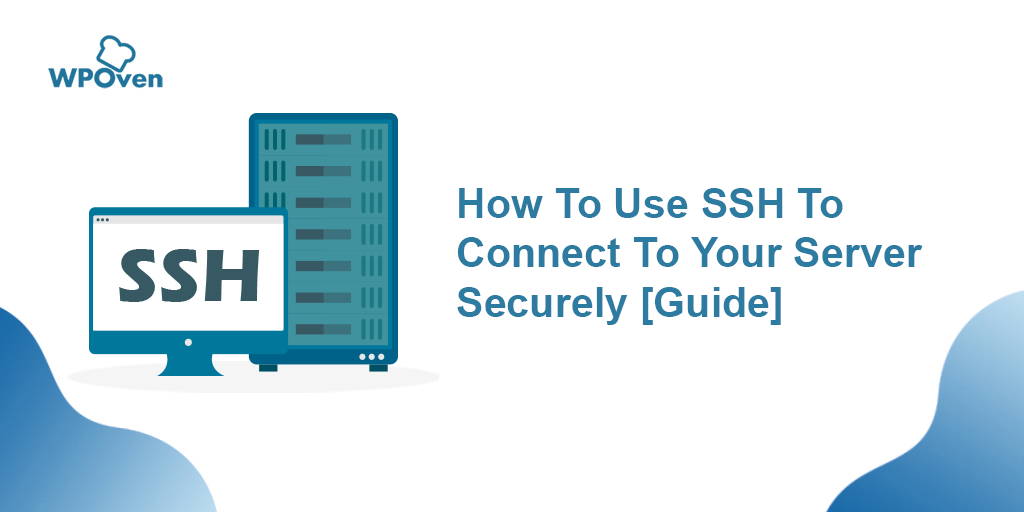Hey there, tech enthusiasts! Are you tired of dealing with the hassle of securing your IoT devices while enabling seamless remote access? Well, buckle up because we’re diving deep into the world of securely connecting remote IoT devices using P2P SSH. This isn’t just about downloading free tools; it’s about doing it the right way to protect your data and privacy. If you’ve been searching for a way to securely connect remote IoT P2P SSH, this article is your golden ticket.
Nowadays, with the rise of smart devices, ensuring security has become more important than ever. Imagine your smart fridge or thermostat being hacked—yeah, not exactly the dream scenario, right? But fear not, because with the right tools and knowledge, you can set up a secure P2P SSH connection that keeps your IoT devices safe and accessible from anywhere in the world.
Before we dive into the nitty-gritty, let me tell you something: this guide isn’t just another tech jargon-filled article. We’re going to break it down step by step, so even if you’re not a tech wizard, you’ll walk away feeling like one. So grab a coffee, get comfy, and let’s explore how to securely connect your IoT devices over P2P SSH without breaking the bank.
Read also:Kaylasimmons Leaked The Truth Behind The Headlines You Need To Know
Understanding the Basics of Secure IoT Connections
Before we jump into the advanced stuff, let’s talk about the basics. What exactly does it mean to securely connect remote IoT P2P SSH? IoT, or the Internet of Things, refers to all those smart devices around your home or office. P2P SSH, on the other hand, is a method of establishing a secure, direct connection between devices over the internet.
Think of it like this: when you want to control your smart thermostat from your phone while you’re on vacation, you need a way to connect to it remotely. But how do you do it safely? That’s where SSH comes in. SSH, or Secure Shell, is a cryptographic protocol that allows you to securely access remote devices. By combining it with P2P technology, you can create a direct, secure connection without relying on third-party servers.
Why Security Matters in IoT
Here’s the deal: IoT devices are awesome, but they come with risks. Unlike traditional computers, many IoT devices lack robust security features. Hackers love exploiting these weaknesses to gain unauthorized access, steal data, or even take control of your devices. So, if you’re wondering why you should bother with securing your IoT connections, the answer is simple—it’s all about protecting yourself and your data.
Let’s look at some stats. According to a recent report, over 70% of IoT devices have significant security vulnerabilities. Yikes, right? That’s why using secure methods like P2P SSH is crucial. It’s not just about convenience; it’s about peace of mind knowing your devices are safe.
Setting Up P2P SSH for Remote IoT Devices
Alright, let’s get to the good stuff. Setting up a P2P SSH connection for your IoT devices might sound intimidating, but trust me, it’s easier than you think. The first step is to make sure your devices are compatible. Most modern IoT devices support SSH, but it’s always a good idea to double-check the specs.
Here’s a quick checklist to help you get started:
Read also:Rebecca Benedict Onlyfans Leaks The Real Story Behind The Headlines
- Ensure your IoT device has SSH enabled.
- Install an SSH client on your computer or mobile device.
- Set up port forwarding on your router if necessary.
- Test the connection locally before going remote.
Once you’ve got everything set up, you can use a P2P SSH tool to establish a secure connection. There are plenty of free options available, but we’ll talk more about that later.
Choosing the Right SSH Client
When it comes to SSH clients, you’ve got options. Some popular ones include PuTTY for Windows users and OpenSSH for Linux and macOS users. But if you’re looking for something more user-friendly, there are plenty of GUI-based clients out there. Just remember, the best client for you depends on your specific needs and preferences.
Here’s a pro tip: always download SSH clients from reputable sources. There are tons of fake or malicious versions floating around the internet, so stick to trusted websites like the official SSH website or well-known software repositories.
Free Tools for Secure IoT Connections
Now, let’s talk about the elephant in the room—cost. The good news is that you don’t have to break the bank to set up a secure P2P SSH connection. There are plenty of free tools available that can help you get the job done. Some of these tools even come with advanced features like encryption and firewall integration.
Here are a few free tools worth checking out:
- TunnelBear: A user-friendly SSH tunneling tool that offers free plans for basic use.
- Ngrok: A popular choice for developers, Ngrok allows you to expose local servers to the internet securely.
- ZeroTier: A virtual network that lets you create secure, private networks for your IoT devices.
Of course, free tools come with limitations. If you’re serious about securing your IoT devices, you might want to consider upgrading to a paid plan for additional features and support.
Comparing Free vs Paid Options
Let’s break it down. Free tools are great for casual users who just want to test the waters. They offer basic functionality and are usually easy to set up. However, if you need advanced features like multi-device support or enterprise-level security, you might need to upgrade to a paid plan.
Here’s a quick comparison:
- Free: Easy to use, limited features, no customer support.
- Paid: Advanced features, priority support, scalable solutions.
Ultimately, the choice depends on your needs and budget. If you’re just starting out, free tools are a great way to learn the ropes without committing to a long-term investment.
Best Practices for Secure IoT Connections
Setting up a secure P2P SSH connection is just the beginning. To truly protect your IoT devices, you need to follow some best practices. Here are a few tips to keep in mind:
- Always use strong, unique passwords for your devices.
- Enable two-factor authentication whenever possible.
- Keep your firmware and software up to date.
- Monitor your network for suspicious activity.
These practices might seem simple, but they can make a huge difference in securing your devices. Think of it like locking your doors and windows—basic precautions that go a long way in keeping intruders out.
Common Mistakes to Avoid
While we’re on the topic of best practices, let’s talk about some common mistakes to avoid. One of the biggest mistakes people make is using default passwords for their IoT devices. Another common mistake is failing to update firmware regularly. These might seem like small oversights, but they can leave your devices vulnerable to attacks.
Here’s a quick rundown of mistakes to watch out for:
- Using weak or default passwords.
- Ignoring firmware updates.
- Not enabling encryption.
- Connecting to unsecured networks.
By avoiding these pitfalls, you can significantly improve the security of your IoT devices.
Securing Your Network with Firewalls
Speaking of security, let’s talk about firewalls. A firewall is like a digital bouncer—it controls who gets access to your network. When it comes to securing your IoT devices, a firewall is an essential tool. It can block unauthorized access and protect your devices from malicious traffic.
There are two main types of firewalls: hardware and software. Hardware firewalls are built into your router, while software firewalls are installed on individual devices. Both have their pros and cons, so it’s a good idea to use a combination of both for maximum protection.
Setting Up a Firewall for IoT Devices
Setting up a firewall for your IoT devices isn’t as complicated as it sounds. Most modern routers come with built-in firewall features that you can configure through the admin panel. Here’s a quick guide to help you get started:
- Log in to your router’s admin panel.
- Locate the firewall settings.
- Enable the firewall and configure it to block unwanted traffic.
- Test the firewall to ensure it’s working properly.
Remember, a firewall is just one piece of the puzzle. It’s important to use it in conjunction with other security measures like SSH and encryption.
Encryption: The Key to Secure IoT Connections
Encryption is the backbone of secure IoT connections. It’s the process of converting data into a code to prevent unauthorized access. When you use SSH to connect to your IoT devices, the data is automatically encrypted, making it much harder for hackers to intercept.
There are different types of encryption, but the most common ones used in SSH are AES and RSA. Both offer strong protection, but they work in slightly different ways. AES is a symmetric encryption algorithm, while RSA is asymmetric. The choice between the two depends on your specific needs and preferences.
Why Encryption Matters
Encryption might sound like a fancy term, but it’s crucial for securing your IoT devices. Without encryption, your data is vulnerable to interception and theft. Imagine someone hacking into your smart home system and gaining access to your personal information. Scary, right? That’s why encryption is such an important part of securing your IoT connections.
Here’s a quick stat: encrypted connections reduce the risk of data breaches by up to 90%. That’s a pretty compelling reason to make sure your IoT devices are using encryption, don’t you think?
Future Trends in IoT Security
As technology continues to evolve, so do the methods for securing IoT devices. One of the most exciting trends is the use of blockchain technology for securing IoT networks. Blockchain offers a decentralized, tamper-proof way to manage data and transactions, making it an ideal solution for IoT security.
Another trend to watch is the rise of AI-powered security tools. These tools use machine learning algorithms to detect and respond to threats in real time. While they’re still in the early stages of development, they show great promise for the future of IoT security.
Preparing for the Future
So, how can you prepare for the future of IoT security? The key is to stay informed and adaptable. Keep up with the latest trends and technologies, and be willing to upgrade your systems as needed. It’s also a good idea to work with security experts who can help you implement cutting-edge solutions.
Remember, the future of IoT security is all about staying one step ahead of the bad guys. By embracing new technologies and best practices, you can ensure that your devices remain safe and secure for years to come.
Conclusion: Take Action Today
And there you have it, folks! A comprehensive guide to securely connecting remote IoT P2P SSH for free. Whether you’re a tech-savvy enthusiast or a beginner just getting started, this guide has everything you need to protect your IoT devices and enjoy seamless remote access.
Here’s a quick recap of what we covered:
- Understanding the basics of secure IoT connections.
- Setting up P2P SSH for remote access.
- Exploring free tools for secure IoT connections.
- Following best practices for maximum security.
- Using firewalls and encryption to protect your devices.
- Staying ahead of future trends in IoT security.
Now it’s your turn to take action. Download a free SSH client, set up a secure connection, and start enjoying the benefits of remote IoT access. And don’t forget to share this article with your friends and followers. Together, we can make the IoT world a safer place for everyone!
Table of Contents
Understanding the Basics of Secure IoT Connections
Setting Up P2P SSH for Remote IoT Devices
Free Tools for Secure IoT Connections
Comparing Free vs Paid Options
Best Practices for Secure IoT Connections


